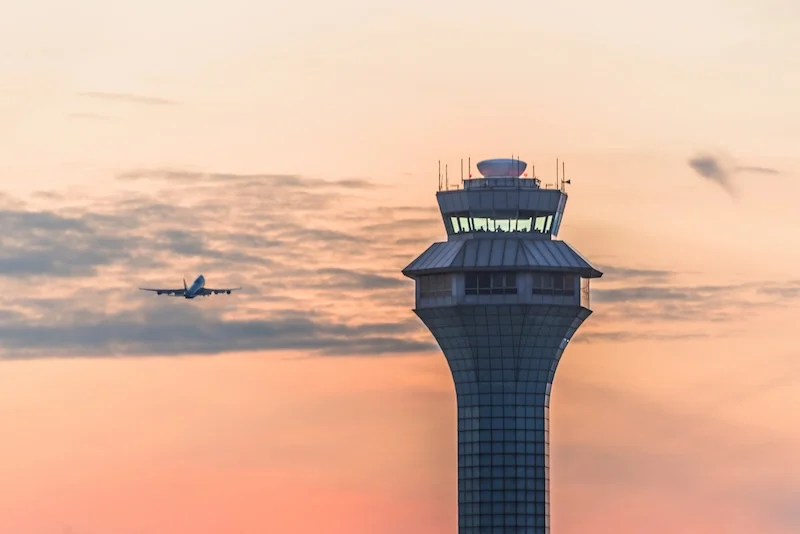This Redundant Aviation Safety Net Helps Keep Planes Safe When Controllers Lose Contact

Recent reports of air traffic controllers at one of the busiest airports in New Jersey losing both radar and radio communications have raised alarms. However, pilots, safety experts, and the Federal Aviation Administration (FAA) have reassured the public that redundant safety systems kept planes from colliding during these outages.
“I think the risk of a collision or an incident was increased, but not significantly due to the redundancy in the aviation system,” said Jeff Guzzetti, a former accident investigator for the FAA and the National Transportation Safety Board (NTSB).
Crashes like the deadly January collision between a passenger jet and an Army helicopter usually result from multiple factors going wrong simultaneously. This article explores how the aviation system’s safety net prevented disaster when communications were lost.
What Happened at Newark?
The radar and communications systems relied upon by the Philadelphia terminal control team, which directs planes in and out of Newark International Airport, failed twice in the past month for brief periods. The main line that carries the radar signal from another FAA facility in New York failed, and the backup line didn’t work immediately. The systems rely in part on outdated copper wiring, and even when fiber-optic lines are in place, the signal must slow down because the FAA’s computers cannot process data at full speed.
This failure led to controllers being unable to see or communicate with planes for as long as 90 seconds on April 28 and May 9. Their radar screens went black, and their radio communications went silent.
Despite these challenges, the redundancy built into the system allowed the FAA to manage the situation effectively. When communications went down, controllers tried reaching pilots via text messaging using data link systems, or through high-powered portable radios. If those options failed, emergency radio frequencies and light guns—used to send signals to pilots for landing—acted as alternative methods of communication.
The FAA’s Redundant Systems at Work
When the radar and communications systems fail, the air traffic control system’s overlapping network of radar sites kicks in. If one terminal control team loses communications, another radar center, typically one that manages higher altitudes, can step in. Furthermore, if a controller hears a pilot broadcasting on an emergency frequency, they can relay the message.
This system proved successful during the Philadelphia outages. Voice communication came back online first, and the radar was restored a minute later. Despite the outages, controllers managed to hand off planes to each other.
In a May 9 recording, a controller could be heard saying, “FedEx 1989, I’m going to hand you off here. Our scopes just went black again. If you care about this, contact your airline and try to get some pressure for them to fix this stuff.” The pilot acknowledged the situation and wished the controllers luck before switching frequencies.
The FAA’s Response and Public Assurance
Acting FAA Administrator Chris Rocheleau emphasized that these failures didn’t compromise flight safety. “When disruptions occur at any airport due to equipment issues or staffing, the FAA ensures safety by slowing down arrivals and departures to reduce congestion,” Rocheleau said. “We keep the flying public safe because there are redundancies built throughout the entire system used by pilots, technicians, and air traffic controllers.”
Pilots and Their Role in Emergency Communication Failures
Pilots are extensively trained to handle communication failures, and modern passenger jets are equipped with collision avoidance technology to ensure safety even in such instances. Capt. Miles Morgan, who oversees training for United Airlines pilots, highlighted the importance of this training. “I’ve been flying for 30 years, and I’ve lost communication once. It wasn’t a big deal; I just switched to the emergency frequency and got back into communication with a different facility.”
Furthermore, planes are equipped with collision avoidance systems that show pilots the position and movement of other aircraft, alerting them to potential conflicts and recommending evasive action if needed.
Ensuring Safety: Training, Procedures, and Technology
Despite the challenges presented by communication and radar failures, the aviation industry has procedures and technologies that provide additional safety margins. Capt. Dennis Tajer, spokesman for the Allied Pilots Association (APA), emphasized the importance of pilots sticking to their last-directed path if communications are lost. “If the outage continues, pilots will broadcast their position to other aircraft and continue on their flight path as usual,” Tajer said.
These incidents highlight the resilience of the aviation system and the comprehensive training pilots receive. It also underscores the importance of the industry’s commitment to safety, which continues to evolve with technology and robust systems to protect passengers.
Related News: https://airguide.info/category/air-travel-business/travel-health-security/safety/
Sources: AirGuide Business airguide.info, bing.com, abcnews.go.com
